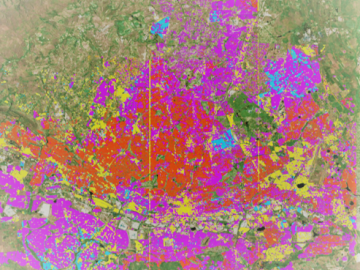Filter News
Area of Research
- (-) National Security (38)
- Advanced Manufacturing (14)
- Biological Systems (2)
- Biology and Environment (97)
- Building Technologies (3)
- Clean Energy (192)
- Climate and Environmental Systems (2)
- Computational Biology (1)
- Computational Engineering (4)
- Computer Science (14)
- Electricity and Smart Grid (2)
- Energy Sciences (1)
- Fuel Cycle Science and Technology (1)
- Fusion and Fission (33)
- Fusion Energy (10)
- Isotope Development and Production (1)
- Isotopes (27)
- Materials (146)
- Materials Characterization (2)
- Materials for Computing (18)
- Materials Under Extremes (1)
- Mathematics (1)
- Neutron Science (71)
- Nuclear Science and Technology (14)
- Quantum information Science (6)
- Sensors and Controls (1)
- Supercomputing (125)
- Transportation Systems (2)
News Topics
- 3-D Printing/Advanced Manufacturing (1)
- Advanced Reactors (1)
- Artificial Intelligence (8)
- Big Data (2)
- Bioenergy (1)
- Computer Science (7)
- Cybersecurity (11)
- Decarbonization (1)
- Environment (2)
- Fusion (1)
- Grid (2)
- High-Performance Computing (3)
- Machine Learning (7)
- Materials (1)
- National Security (18)
- Nuclear Energy (4)
- Partnerships (3)
- Quantum Science (1)
- Security (4)
- Sustainable Energy (1)
- Transportation (1)
Media Contacts

Deborah Frincke, one of the nation’s preeminent computer scientists and cybersecurity experts, serves as associate laboratory director of ORNL’s National Security Science Directorate. Credit: Carlos Jones/ORNL, U.S. Dept. of Energy

An analysis published in the Proceedings of the National Academy of Sciences and led by researchers from the U.S. Department of Energy’s Oak Ridge National Laboratory has received the 2021 Sustainability Science Award from the Ecological Society of America.

As Hurricane Dorian raged through the Bahamas, researchers at Oak Ridge National Laboratory worked around the clock to aid recovery efforts for one of the Caribbean’s worst storms ever.

Oak Ridge National Laboratory will give college students the chance to practice cybersecurity skills in a real-world setting as a host of the Department of Energy’s fifth collegiate CyberForce Competition on Nov. 16. The event brings together student teams from across the country to compete at 10 of DOE’s national laboratories.

IDEMIA Identity & Security USA has licensed an advanced optical array developed at Oak Ridge National Laboratory. The portable technology can be used to help identify individuals in challenging outdoor conditions.

Scientists at the Department of Energy’s Oak Ridge National Laboratory are working to understand both the complex nature of uranium and the various oxide forms it can take during processing steps that might occur throughout the nuclear fuel cycle.

Geospatial scientists at Oak Ridge National Laboratory analyzed three cities of varying infrastructures to look for patterns of electricity use and locate “dark spots” where informal neighborhoods may lack access to power.

Gleaning valuable data from social platforms such as Twitter—particularly to map out critical location information during emergencies— has become more effective and efficient thanks to Oak Ridge National Laboratory.




